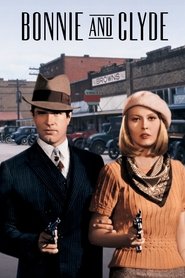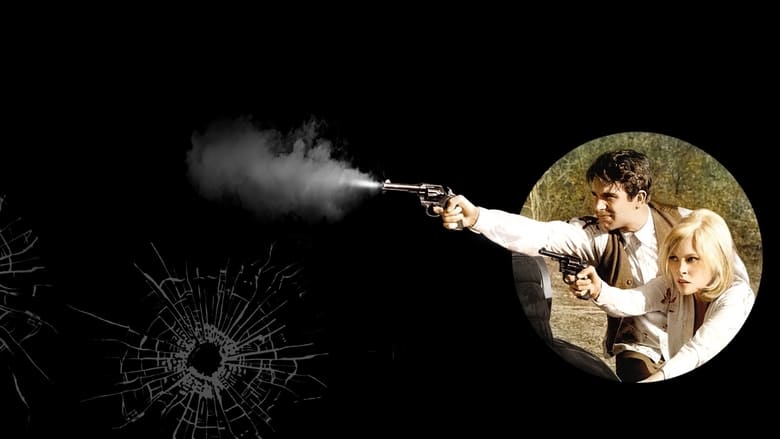“Bonnie and Clyde 1967” is a film about two young lovers-turned-outlaws who rob banks and steal cars across the Midwest during the Great Depression. The film features iconic performances from Warren Beatty and Faye Dunaway as the titular characters. Its blend of humor, violence, and unconventional storytelling helped redefine American cinema. Bonnie’s beret has become synonymous with her character and their story ends in a hail of bullets on a dusty back road.

CLICK HERE🠇🠇🠇📽️_Watch Bonnie and Clyde 1967 English Subtitles_
Review
It’s been over 50 years since the release of the movie “Bonnie and Clyde,” but it still remains a classic in Hollywood history. Directed by Arthur Penn, this film tells the story of two notorious outlaws who became a symbol of rebellion and anti-establishment during the Great Depression.
The storyline of Bonnie and Clyde follows the two main characters, Bonnie Parker (Faye Dunaway) and Clyde Barrow (Warren Beatty). Clyde is a wanted criminal who meets Bonnie when she tries to steal his car. They instantly fall in love, and together they embark on a crime spree across multiple states in America.
The plot of this movie is filled with action, drama, and tragedy. The couple robs banks, stores, and gas stations while facing opposition from law enforcement. They’re eventually caught in an ambush that ends with their violent deaths.
Did you know that the real-life Bonnie Parker was only 23 years old when she died? Her partner in crime, Clyde Barrow was 25. The movie depicts them as being older than their real ages to make them appear more mature. This slight deviation from history was necessary to make the characters more relatable to audiences.
The cast for this film was excellent. Warren Beatty played Clyde with a mix of charm and toughness that made audiences root for him even when he was doing something illegal. Faye Dunaway portrayed Bonnie as a strong-willed woman that wasn’t afraid to take charge.
One of the most iconic quotes from Bonnie & Clyde is spoken by Clyde: “We rob banks.” The simplicity of those three words encapsulates everything that these two criminals stood for: rebellion against authority figures and living life on their own terms.
The acting performances were top-notch, with both leads receiving Academy Award nominations for Best Actor/Actress in Leading Roles.
Critics praised this film for its realistic portrayal of violence and its use of innovative camera work. Filmed primarily on location in Texas, the crew used real vintage cars and costumes to create an authentic atmosphere of the 1930s.
The score for Bonnie & Clyde was composed by Charles Strouse and performed by the famous jazz musician, Ray Charles. The music perfectly captures the frenetic energy of the film’s action scenes while also conveying a sense of sadness during its tragic moments.
The popularity of Bonnie and Clyde led to several other movies and TV shows about these two characters. However, none have matched the success or cultural impact of this original film.
From a technical standpoint, this movie was groundbreaking and pushed boundaries in terms of what audiences had seen before. Its use of slow-motion during violent scenes was a novel concept at the time.
The filming process for Bonnie & Clyde was reportedly chaotic, with Warren Beatty having complete control over all aspects of production. There were frequent fights between him and director Arthur Penn, but ultimately their collaboration resulted in one of the most memorable films of all time.
In terms of evaluation, this movie has been praised for its bold storytelling and innovative approach to filmmaking. It’s considered a classic that has stood the test of time and still resonates with audiences today.
Bonnie & Clyde won two Academy Awards out of ten nominations: Best Cinematography (Burnett Guffey) and Best Supporting Actress (Estelle Parsons).
Cinematography played a critical role in this movie’s success. The use of natural lighting and handheld cameras gave it a documentary-style feel that made it more immersive for viewers.
Criticism for Bonnie & Clyde focused largely on its glorification of violence. Some felt that it romanticized criminal behavior instead of focusing on its consequences.
Throughout cinema history, there have been many movies that capture people’s attention because they showcase characters who live outside societal norms. However, few have done it as successfully as Bonnie & Clyde did in 1967.
In conclusion, “Bonnie and Clyde” is a remarkable film that enjoyed immense success in its time and remains relevant to this day. Its focus on anti-establishment, rebellion, and the consequences of living outside the law continues to resonate with audiences. It’s a must-see for any film buff, whether a fan of classic cinema or a newcomer to the genre. If you haven’t seen it yet, add it to your watchlist today!
Technical Data

- Runtime : 110
- Release : 1967-07-18
- Genre : Crime, Drama
- Cast : Warren Beatty as Clyde Barrow, Faye Dunaway as Bonnie Parker, Michael J. Pollard as C. W. Moss, Gene Hackman as Buck Barrow, Estelle Parsons as Blanche
- Crew : Dean Tavoularis as Art Direction, Harvey Parry as Stunts, Arthur Penn as Director, Warren Beatty as Producer, Burnett Guffey as Director of Photography
- Popularity 26.6
- Budget : $2,500,000
- Revenue : $50,700,000
- Company : Tatira-Hiller Productions, Warner Bros-Seven Arts
- Summary : In the 1930s, bored waitress Bonnie Parker falls in love with an ex-con named Clyde Barrow and together they start a violent crime spree through the country, stealing cars and robbing banks.
- Tagline : They’re young… they’re in love… and they kill people.
